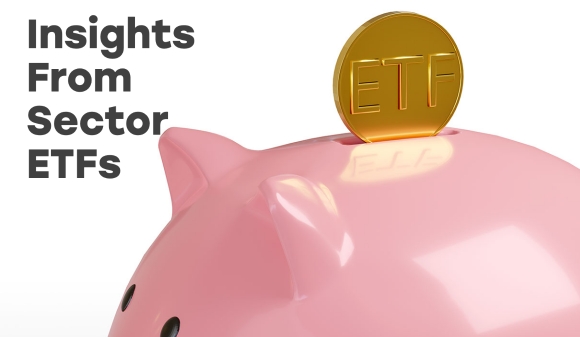Insights From Two Opposing Strategy ETFs: Growth & Value

 Analyzing the market from the viewpoint of different factors and strategies such as size (market-cap), momentum, growth, value, low volatility and quality can give us some insight as to why the market is behaving the way it is. Looking at the performance of Exchange-Traded Funds (ETFs) is a quick and simple way to test out how different strategies work in different market environments. Let’s take a look at how different factors and strategies have performed so far Year-to-Date (YTD) in the chart below.
Analyzing the market from the viewpoint of different factors and strategies such as size (market-cap), momentum, growth, value, low volatility and quality can give us some insight as to why the market is behaving the way it is. Looking at the performance of Exchange-Traded Funds (ETFs) is a quick and simple way to test out how different strategies work in different market environments. Let’s take a look at how different factors and strategies have performed so far Year-to-Date (YTD) in the chart below.

Growth and value
The two obvious extremes in the chart below are seen in the YTD performance of iShares Canadian Growth ETF (XCG) at almost two per cent and iShares Canadian Value ETF (XCV), down nearly 17% at the time of writing.
The first thing to note is that XCG has holdings that are vastly different than most standard Canadian equity ETFs. The fund’s growth strategy makes it somewhat sector agnostic but ends up with a relatively higher weighting in the industrial and technology sectors at 21% and 18% respectively. For technology, Shopify alone takes up 11% of that 18% weighting in technology and a main contributor to XCG’s success so far this year. A quick look at the top ten holdings and we see healthy mix of technology, industrials, energy, financials, consumer staples and materials sector. This ETF’s mandate of seeking companies with above average earnings growth seems to have worked well.
On the other hand, XCV looks for companies with below average valuation multiples compared to the market, which may not be the best single criteria to use. XCV has an above average concentration in the financial sector (nearly 62%), which has not done so well this year due to reasons such as loan losses and slower future growth expectations in general.
Size and Growth Combo
Another reason for the outperformance of XCG compared other ETFs is the large-cap component. Investors tend to flock to larger companies and move away from smaller companies in an economic crisis. However, size is not the only determining factor, which we can see in the underperformance of iShares S&P/TSX 60 Index ETF (XIU) compared to XCG. Interestingly CI First Asset Morningstar Canada Momentum Index ETF (WXM) which holds a blend of small, mid and large-cap has a similar -6% YTD performance to XIU, which leads us to conclude that it could be a combination of improved prospects for economic growth and the large size and financial stability of companies that has contributed to such a swift recovery in XCG. This was also quite apparent with U.S. large-cap growth companies, many of which recovered to pre-coronavirus levels as early as May.
Value investing needs patience
With valuations of growth companies becoming more expensive over the years, value investors have been waiting for their time to shine. With the recent market crash related to the coronavirus, we would have expected this to be an opportune moment for investors to pile into value stocks that are trading at even steeper discounts that could provide “obvious” reversion-to-the-mean returns. So far, the opposite has happened as investors eye a quicker economic recovery, bringing back optimism related to company growth. This has left value stocks behind in deeper negative territory.
However, this does not mean value investing does not have the potential to pay off. The quick recovery in growth stocks just means they tend move much faster than value stocks when there is a change in sentiment (whether good or bad). You may have heard that value investing requires patience, and this is exactly why. The good news for value investors is that they have much more time to make informed decisions than growth investors when considering the fast pace some of these growth stocks move. Finally, if we look at the chart below, the further back in time we look, the “less worse” value seems when comparing to a growth strategy.

Disclosure: Authors, directors, partners and/or officers of 5i Research have a financial or other interest in XIT and ZRE.

